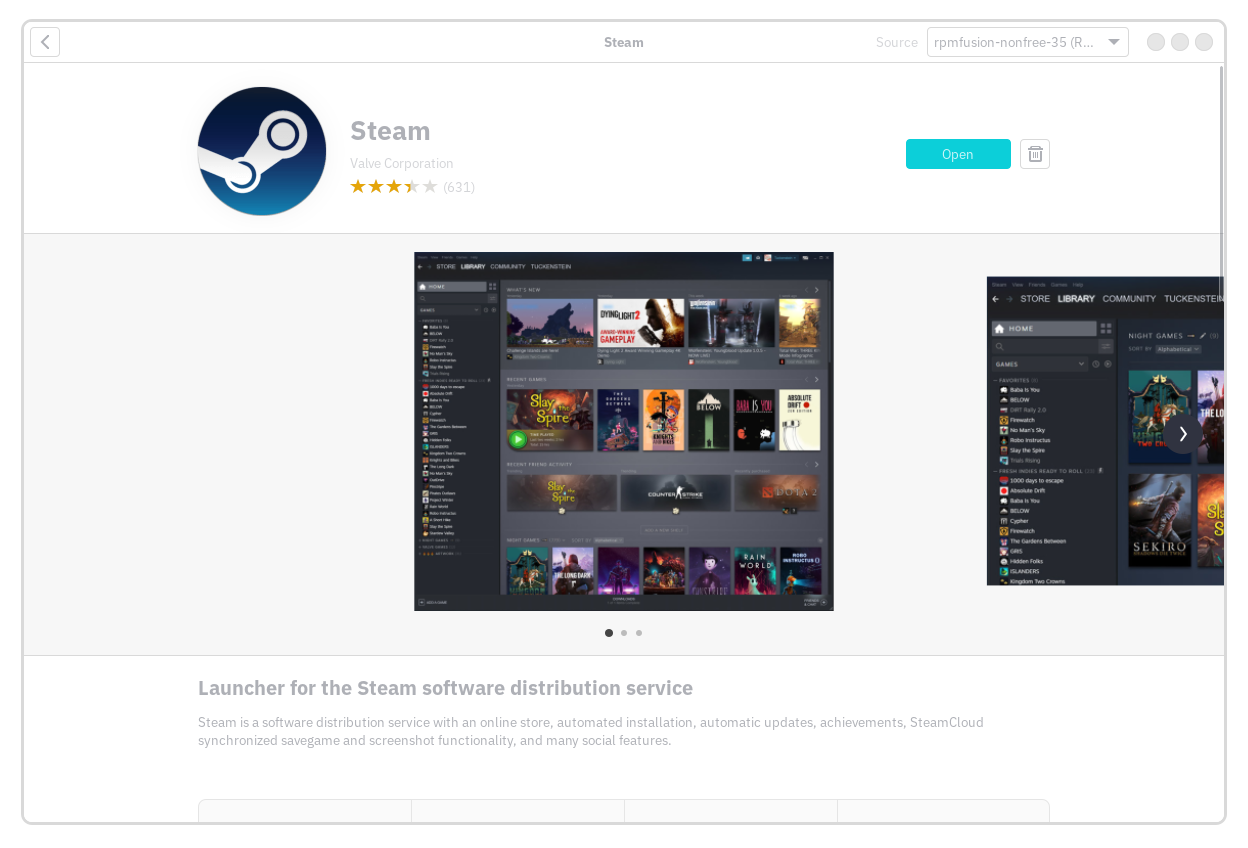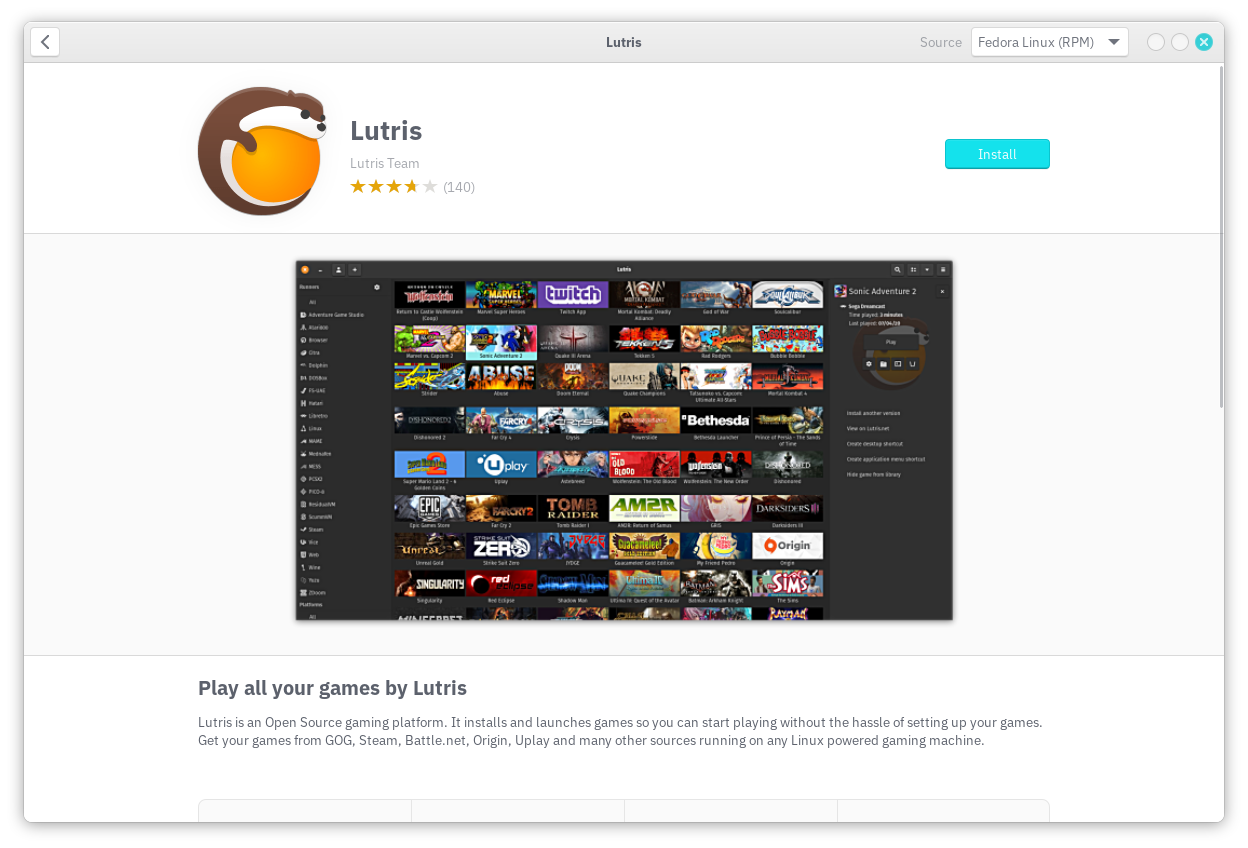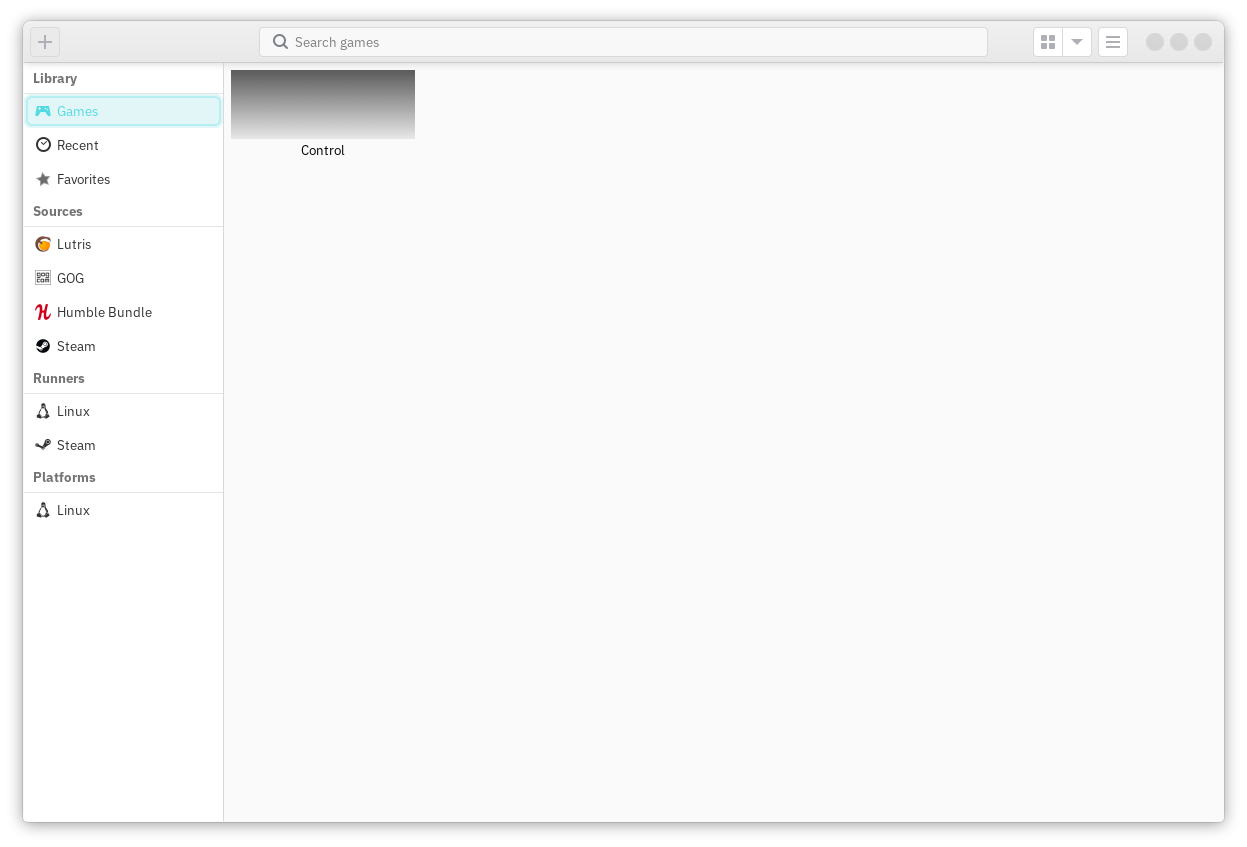Fedora Workstation’s State of Gaming – A Case Study of Control (2019)
The article explores the state of gaming on Fedora Workstation, specifically focusing on the performance of the video game "Control" (2019) using DirectX 11 and DirectX 12 with their compatibility layers DXVK and VKD3D, respectively. The tests compare Fedora Workstation 35 with Windows 10 21H2.

Back in the day, it used to irk me as to how GNU/Linux[1] distributions could not be even considered to be in the proximity of video games enthusiasts – less because of the performance of the video games themselves and more because of how inconvenient it could be for them to set it all up. Admittedly, it had been quite a while since an avid video games fan like me did that, so it was almost a no-brainer for me to try it out and see if things have changed. What I ended up finding surprised me – I like to think that it would be just as pleasing to both enthusiasts who have been playing video games on GNU/Linux distributions and to newcomers who have been scoping this, alike.
On a testing bench using an AMD RDNA2-based[2] GPU, the video game was configured to the highest possible graphical preset[3] to really stress the hardware into performing as much as its limiting factor. If the RDNA2 architecture reminds you of something, allow me to share that it is what forms the foundation of the GPU that no other than the widely acclaimed Steam Deck[4] makes use of. For that matter, if you factor in some performance scaling with respect to the handheld nature of the device and the optimized Proton compatibility layer, this article can be representative of what the Steam Deck is capable of when you use Fedora Workstation[5] as a platform of your choice for playing your favourite video games.

To have an apples-to-apples comparison, we set up two environments – one with Windows 10 21H2[6] and one with Fedora Workstation 35. On the former, I installed MSI Afterburner[7] and ensured that the graphics drivers are up-to-date while I did not have to bother doing the same on the latter as they came preinstalled. The only extra thing that I did was to configure the Lutris v7.1 runner[8] after clicking my way through installing Lutris[9] and MangoHUD[10] from GNOME Software[11]. It is downright astonishing how much you can do these days on GNU/Linux distributions without actually having to interact with the command line, making the entry barrier very low and welcoming.

Before we get into some actual performance testing and comparison results, let me talk a bit about the video game that is at the centre of the case study. Control[12] is an action-adventure video game developed by Remedy Entertainment[13] and published by 505 Games[14]. The video game is centred around a fictitious organization about paranormal activities and takes inspiration from the likes of the SCP Foundation[15]. It is a well-optimized video game that exhibits great graphics and is a showcase of what the underlying hardware is capable of. I ran tests on both DirectX 11[16] and DirectX 12[17] versions of the video game with their compatibility layers[18], DXVK[19] and VKD3D[20], respectively.

Following are the results of the tests. I made use of OBS Studio[21], which is available as both an installer binary and as a package in the RPM Fusion[22] repositories, to record around 15 seconds of in-menu gameplay and around 60 seconds of in-game gameplay. As the video game does not have any intrinsic benchmarking tool, the footage had to be broken down into segments of equal time periods to be able to pick up performance statistics on CPU usage, GPU usage and framerate. Please do note, even when OBS Studio introduces a certain overhead to the performance, the comparison still remains valid as in both the platforms the recording software is configured identically.
Metrics
Framerate


CPU usage


GPU usage


Please feel free to let your inner enthusiast loose in the statistics and try sharing as many performance differences as you have inferred so far in the comments section below. In the meanwhile, allow me to share mine –
- With DXVK (DirectX 11), the loss of average in-menu framerate is around 19.87% and the same for average in-game framerate is barely 6.26%. DXVK is almost at the stage where a blind test of framerate smoothness could potentially confuse anyone as to which platform runs natively.
- With VKD3D (DirectX 12), the loss of average in-menu framerate is barely 8.67% and the same for average in-game framerate is around 24.51%. VKD3D seems to be steadily catching up and very soon enough, video games would be able to run with minimal loss of performance.
- With DXVK, there is only 1.40% of additional average CPU usage in the menus and around 17.88% of the same in the game. Closing this gap would help save battery life on handheld devices.
- With VKD3D, the average CPU usage in the menus is around 1.47% less than the equivalent Windows platform and the same in the game is 1.62% more. VKD3D is a great choice for handheld devices.
- With DXVK, the average GPU usage in the menus is around 13.40% more than that on Windows and the same in the game is around 1.04% more, making it more efficient in geometry rendering and less so in sprites.
- With VKD3D, the average GPU usage in the game is around 8.13% more than that on Windows and the same in the game is around 9.34% less, thus helping save battery on handheld devices running these video games.
- The CPU governor[23] makes a marginal difference in performance and hence, it is something that can be left alone untweaked. The marginal difference noticed can also be considered in the margin of error.
- Fedora Workstation uses fewer system resources out of the box and hence, can easily dedicate a huge chunk of those to the video game in question but the same is not possible in Windows 10 21H2.
For someone who looked into GNU/Linux distributions as a platform for using interactive and entertainment software applications without having any fancy hardware requirements, these results almost feel like a breath of fresh air. With Valve[24] working on strengthening Proton[25] and other communities working on great solutions like Bottles[26] and Lutris, gaming on GNU/Linux distributions is no longer an elusive dream. Things are only going to get better with a great number of video games running at near-native performance as we go on. I do not know for certain if 2022 would be the year of Linux Desktop or not, but if you ask me whether 2022 would be the year of Linux Gaming – I would answer that with a resounding yes. Let me know your thoughts down below!
Appendix
- Highest possible graphical preset[3]
- Configuration differences[27]
- Performance measurements in the menus[28]
- Performance measurements in the game[29]
References
- https://en.wikipedia.org/wiki/Linux
- https://www.amd.com/en/technologies/rdna-2
- https://gist.github.com/t0xic0der/e6958f9404d395705a8b67a1ab39d024#file-preset-csv
- https://en.wikipedia.org/wiki/Steam_Deck
- https://getfedora.org/
- https://docs.microsoft.com/en-us/windows/release-health/status-windows-10-21h2
- https://www.msi.com/Landing/afterburner/graphics-cards
- https://lutris.net/runners
- https://lutris.net/
- https://github.com/flightlessmango/MangoHud
- https://gitlab.gnome.org/GNOME/gnome-software
- https://en.wikipedia.org/wiki/Control_(video_game)
- https://www.remedygames.com/
- https://505games.com/
- https://scp-wiki.wikidot.com/
- https://en.wikipedia.org/wiki/DirectX#DirectX_11
- https://en.wikipedia.org/wiki/DirectX#DirectX_12
- https://en.wikipedia.org/wiki/Compatibility_layer
- https://github.com/doitsujin/dxvk
- https://source.winehq.org/git/vkd3d.git/
- https://obsproject.com/
- https://rpmfusion.org/
- https://wiki.archlinux.org/title/CPU_frequency_scaling#Scaling_governors
- https://www.valvesoftware.com/en/
- https://github.com/ValveSoftware/Proton
- https://usebottles.com/
- https://gist.github.com/t0xic0der/e6958f9404d395705a8b67a1ab39d024#file-config-csv
- https://gist.github.com/t0xic0der/e6958f9404d395705a8b67a1ab39d024#file-in-menu-csv
- https://gist.github.com/t0xic0der/e6958f9404d395705a8b67a1ab39d024#file-in-game-csv
This article was originally posted on Fedora Magazine on 21 March 2022.